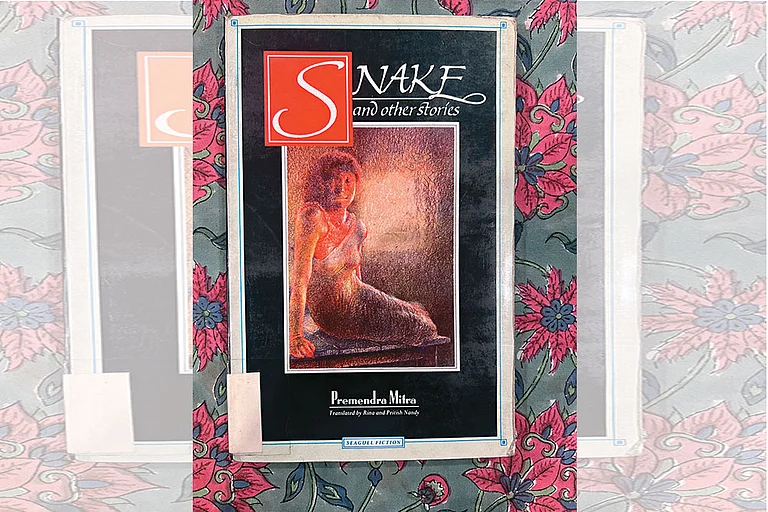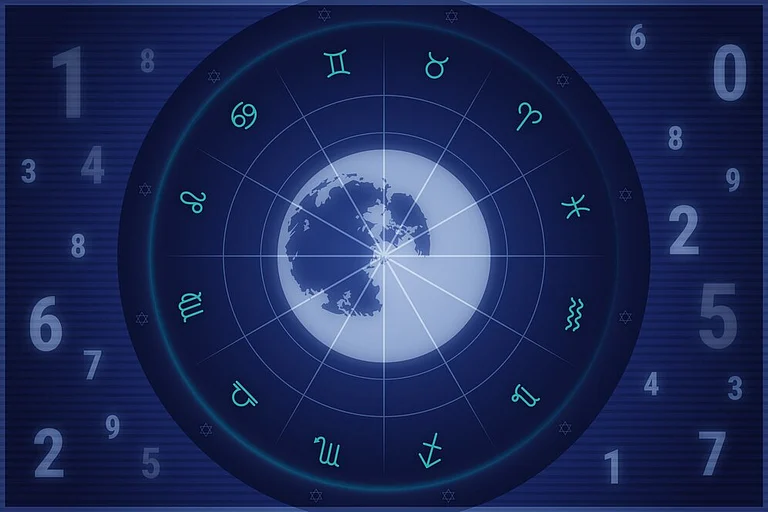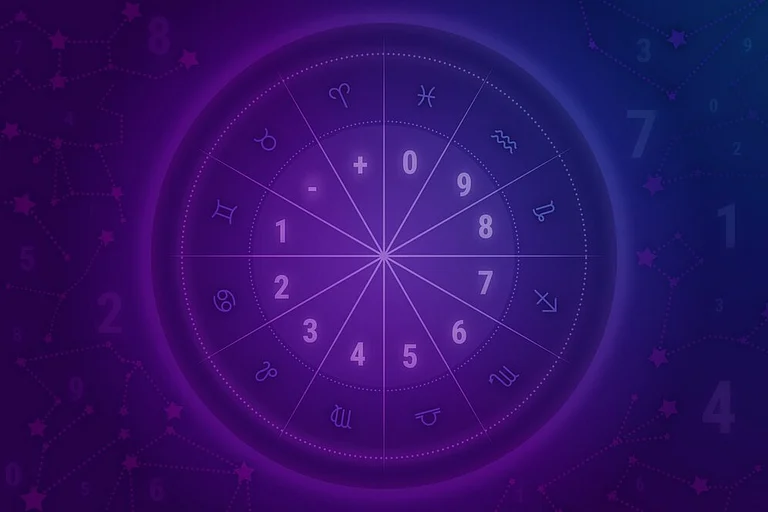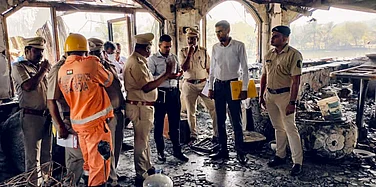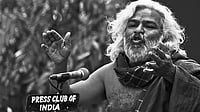Why do Hindutva followers have to display swords when they could brandish shotguns? They could exhibit at least automated or semi-automatic weapons—if not the real, then the replicated or fake ones. They have the right to display anything they like—from hatred to hurt sentiments. But why swords?
The point is that the power of the sword still flies high, writes Damon Young in ‘How Are Swords Still a Thing’:
We live in an age of anti-aircraft lasers, electromagnetic railguns, and rifle sights with ballistic computers. American drone pilots in New Mexico kill children more than 11,000 kilometres away, in Afghanistan. Swords have almost no place on the modern battlefield—even bayonets are becoming rare.
Swords have gone obsolete in combat. But they keep appearing. Leaders who travel by high-tech planes and use cutting age technology in their everyday lives wield swords at public rallies. Grooms who run big tech companies in Silicon Valley carry swords at their marriages.
Swords are out as there are wars outside. All over India, festivals such as Dussehra and Ramnavami are turning into sword rallies. From Ranchi and Hazaribagh to Gulbarga, from Haldia to Nalanda, people are marching with swords. The sword is turning into an object of worship. A sacrificial object and a celebratory artefact. Having swords is a matter of pride. More than anything else, the sword is about social status. It is about being a Kshatriya. It is about claiming the Kshatriya impunity.
The sword was always there but its resurgence is new. It already has its residual presence in a casteist-feudal society. Grooms still walk with swords as if they are not going to weddings but to wars, not to marry but to murder the bride. Brides too come with knives. The sword has been very much part of the jhanki (tableaus) and shaadi (weddings). It is decorating the memorials of heroes, leaders and martyrs. It is commemorating the histories and genealogies of communities. It is walking naked in the public sphere, diving deep into democracy. It has come with a new function and a new fascination. It is a new fetish. A new fashion.
A sword denotes power through its physicality, but its real presence is psychological. It symbolises valour, hatred and fear. As a mythical weapon, it manifests supernatural power.
A sword is a weapon and more than a weapon. It cuts more than it cuts. The sword has seen a strong resurgence in recent years. With the rise of Hindutva politics, its presence has been massively felt. The association of Hindutva and the sword is not an uncanny one. It is not surprising that we are seeing more swords than we have ever seen in the near past. Its presence is overpowering. But the sword is also about exaggeration and embellishment. Have you heard about the swords of Rana Pratap weighing more than his body and measuring more than his kingdom?
It is not surprising that we are seeing more swords than we have ever seen in the near past. Its presence is overpowering.
The Sword is About Symbolic Power
The sword is about tacit and unconscious modes of domination. More than cut value—how much flesh it takes out, it is about cult value—how much of a fetish it can create. Its power lies in its aura, oration and announcement. The question is not to ask what one can do with a sword but what a sword can do to the one who holds it.
If a royal sword sends a bearer to royal power, the ritualised sword sends bearers into a trance. They enter the monumentalised pasts. They take a leap and enter the myth. They enter the history of the medieval past. It makes the bearers believe that they are flag bearers of history. It gives the bearers a sense of ancestry. They feel that they have the divine right to rule; the right to inflict violence on the subjects. A sword bearer often speaks on behalf of everyone. A sword bearer becomes our leader with the same psychology.
The power of a sword does not lie in its physicality but in its ritualised and aestheticised power; not necessarily in its security but in its sacredness. The power of a sword does not lie on its sharp edge, but in its muscular hold; in the narratives told by the bards who rarely had power to use the sword but always sang about it. Power does not necessarily lie in the action that a sword performs but in its immaculate appearance. Kings used to decorate their swords more than their moustaches—bodily pride. Moustaches would appear like swords. And swords like moustaches. It is not surprising that kings had their swords elegantly designed and their blades inlaid with silver, pearls and gold.
More than a functional weapon, today, a sword is a cultural artefact. A sword is less about real history. It assumes more power when it enters history, when it becomes part of epics and ballads. Remember the swords of Maharana Pratap, Alha-Udal and Jhansi ki Rani? A sword procures more affect when it turns into a heritage object. It gets even more worshipped after the death of a hero. It becomes a sign of martyrdom. It becomes magnificent when it goes to the museum. When it is memorialised and mythicised. A sword becomes more powerful when it becomes part of inheritance, when it is handed over from one king to another and from a king to a nation state. With a sword in hand, a democratically elected leader starts behaving like a Kshatriya king.
A sword is a weapon of sensation. You take a sword in your hand and you feel high. Even powerless Shudras feel like Kshatriyas once they hold swords in their hands. They get a sensation of power without coming into power. It is an ultimate weapon of ironical assertion in which low castes feel like upper castes. And all the women who hold swords become mardani (feel like male warriors).
A sword has to show that it was never defeated, that it never surrendered. It carries the ideology of conquering.
The Return of the Kshatriyas
Whose honour does the sword carry? Whose body is it looking to sacrifice? The return of the sword in the Indian social context is an announcement that the Kshatriyas want to make a comeback. As the Vedic period normalises the glory of Brahmins, Hindutva wants to make similar markers in the medieval period with the figure of the Kshatriya.
In our time, swords have turned into artefacts. In A Cultural History of the Medieval Sword, Robert W Jones writes how the sword represented nobility and status. It was the emblem of the knight and the king. Royalty was known for possessing a range of swords. Swords were part of the showcase. It was about symbolic power.
What we see in the return of the sword is the return of the idealised Kshatriyas—the Rajput warriors. The connection is so strong that you take a sword and you feel like a Kshatriya. You feel like a Rajput. Novelist Phanishwarnath Renu writes in Maila Anchal:
The blood of Rajput youths boils after getting shaft, spear and sword in their hands. That day Hargauri was saying, “Sanyojak-ji! I do not feel anger against those Yavanas, I want to blow the necks of those Hindus who take the side of Yavanas.” Sanyojak-ji stood away, otherwise, Hargauri used the sword in the way his neck would have been separated from his body...Aaryavart....The name of Meriganj has perhaps changed to ‘Aarjabrat’ (Aaryavarta).
—[Translated from Hindi by Brahma Prakash]
Not everyone has the right to choose a sword. The selection has already been made by birth. It is more about jati and the varna system. The object is already encoded with names and whom it belongs to. There are coded histories on it. Written all over are the war histories except the humiliating defeats of the Rajputs. A sword has to show that it was never defeated, that it never surrendered. It carries the ideology of conquering.
As Kshatriyas’ symbols of pride, swords and horses are not allowed to the lower castes. It does not matter if one carries a more deadly weapon. The weapon here is not about lethality, it is about legality—whether one has sanction to use it or not.
Hindutva in its ideological core still tries to maintain its inherent principles of varnaashram dharma. It has been trying to renew Brahmanism and to bring back the domination of Vaishyas in business. Likewise, it has been working to bring back Kshatriya pride. Unlike other weapons of prowess, a sword is also about coercive power. Hindutva’s Brahmanical hegemony is not enough; the caste society also uses coercive power from time to time. This is what a sword fulfils. In recent history, anti-caste politics had shattered the Kshatriya pride. Hindutva politics has given a new lease to usurp that pride. The sword is very much part of that reinforcement.
Hindutva’s insistence on the sword is also about its pointed vision. If the bulldozer is about flatness, the sword is about pointedness. A sword makes a point: You surrender or get slashed. Once someone has a sword in their hand, it is pointless to make any point. You are with us or anti-nationals. The song of a sword ends up in valourisation or denigration. It goes against the spirit of dialogue. The sword carries the talk of medieval superiority. People remember it: jab baat baat par talwar nikal jati thee (when they used to draw the sword after every talk). That is precisely what Hindutva wants to take out from the ‘sword vision’.
(Views expressed are personal)
MORE FROM THIS ISSUE
Brahma Prakash is assistant professor at the school of arts and aesthetics, JNU and the author of Body On The Barricades
This appeared in the print as 'Swords In The Time Of Shotguns'







